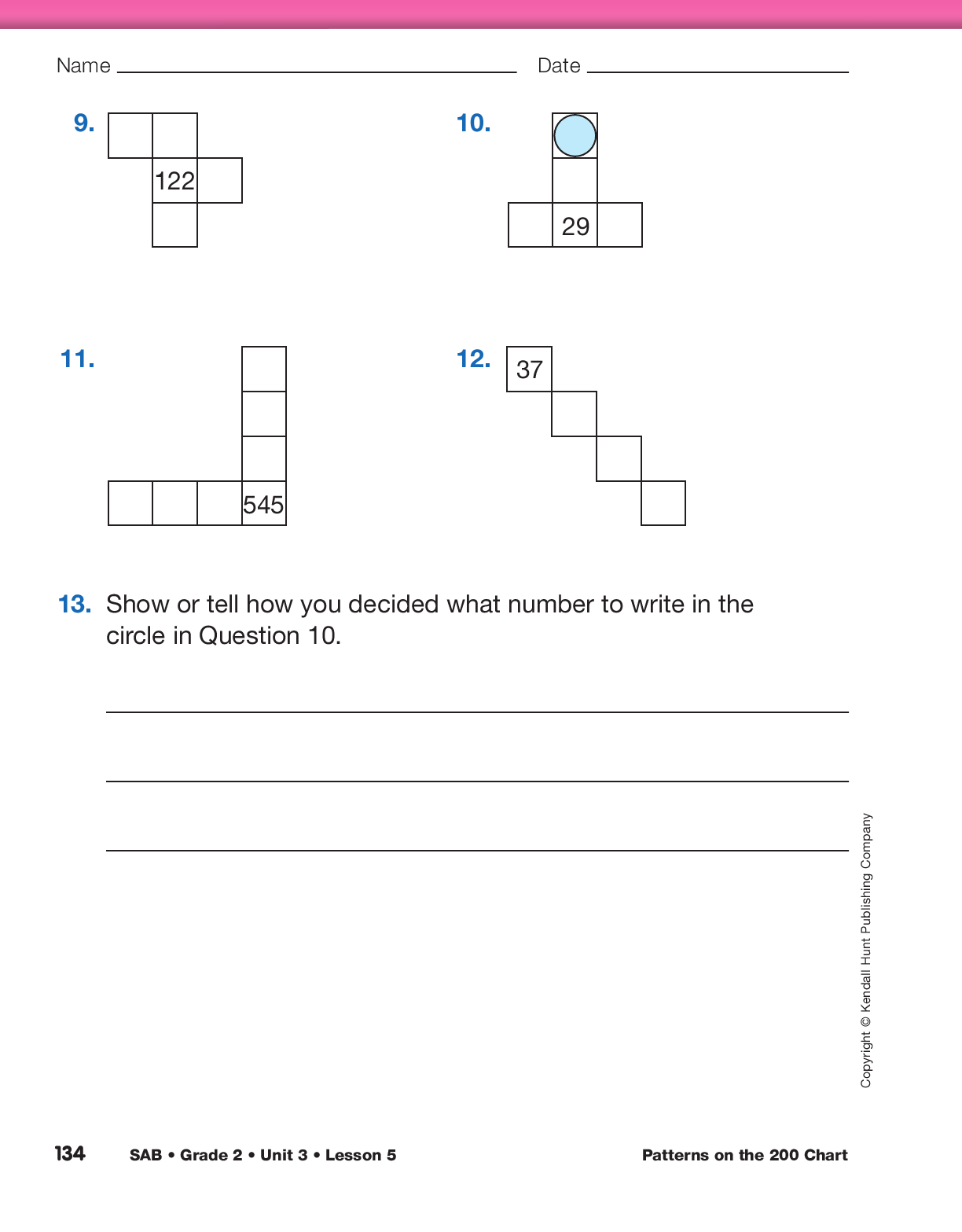Patterns beyond the 200 Chart.
Display the 200 Chart and ask students to reflect on the patterns discussed.
- If the 200 Chart grew longer, what numbers would be
in the next row? (201, 202, 203, 204, 205, 206, 207,
208, 209, 210)
- How many rows of ten are needed to reach 300?
How do you know? (Ten. I can count ten rows from
1 to 100 and ten rows from 101 to 200 on the 200
Chart. Ten rows of 10 make 100.)
- What numbers come before and after 375?
(374
comes before 375 and 376 comes after 375.)
- What numbers come above and below 375? (365 is
above and 385 is below 375.)
- What are the next two numbers after 599? (600 and
601) Are they on the same row? How do you know?
(Possible response: No; 600 is at the end of the row
because it’s a ten and 601 starts the next row; all
the rows start with a number that ends with 1.)
- If you add ten to 734, how would you move and on
what number would you land? (I would move one
row directly below 734 to 744.)
- If you subtract ten from 423, how would you move
and on what number would you land? (I would
move one row directly above 423 to 413.)
Play Mystery Number. Display the 200 Chart and
tell students you will provide clues to numbers on the
chart. They will need to identify the mystery numbers.
Tell students to be ready to demonstrate how they used
the chart to find each number.
Use prompts similar to the following:
- I’m thinking of a number that is ten more than 189.
What is my number? (199)
- I’m thinking of a number that is ten less than 63.
What is my number? (53)
- I’m thinking of a number that is 6 tens and 7 ones.
What is my number? (67) Is it even or odd? How do
you know? (Odd. It does not end in 2, 4, 6, 8, or 0
like even numbers do.)
- I’m thinking of a number that is 12 tens and 8 ones.
What is my number? (128) Is it even or odd? How
do you know? (Even. It ends with 8, which is an
even number.)
- I’m thinking of a number that is 15 less than 85. What
is my number? (70) Is it even or odd? How do you
know? (Even. It ends in the even number, 0.)
- I’m thinking of a number that is 8 tens less than 177.
What is my number? (97) Is it even or odd? How do
you know? (Odd. It does not end in 2, 4, 6, 8, or 0
like even numbers do.)
- I’m thinking of a number that we say when we skip
count by fives. It is four more than 131. What is my
number? (135) Is it even or odd? How do you
know? (Odd. It does not end in 2, 4, 6, 8, or 0 like
even
numbers do.)
Assign the Tricky Patterns pages in the Student
Activity Book for students to complete independently.
Students apply patterns to fill in irregularly shaped
sections of the 200 Chart and beyond.
Use the Tricky Patterns pages in the Student Activity Book to
assess students’ abilities to identify, describe, and use
patterns on a 200 Chart [E1] and connect moves on the
200
Chart to number sentences [E2].
Assign the Missing Numbers on the 200 Chart
Homework Master to practice patterns on the 200
Chart. This reinforces an understanding of the organization
of our number system.















